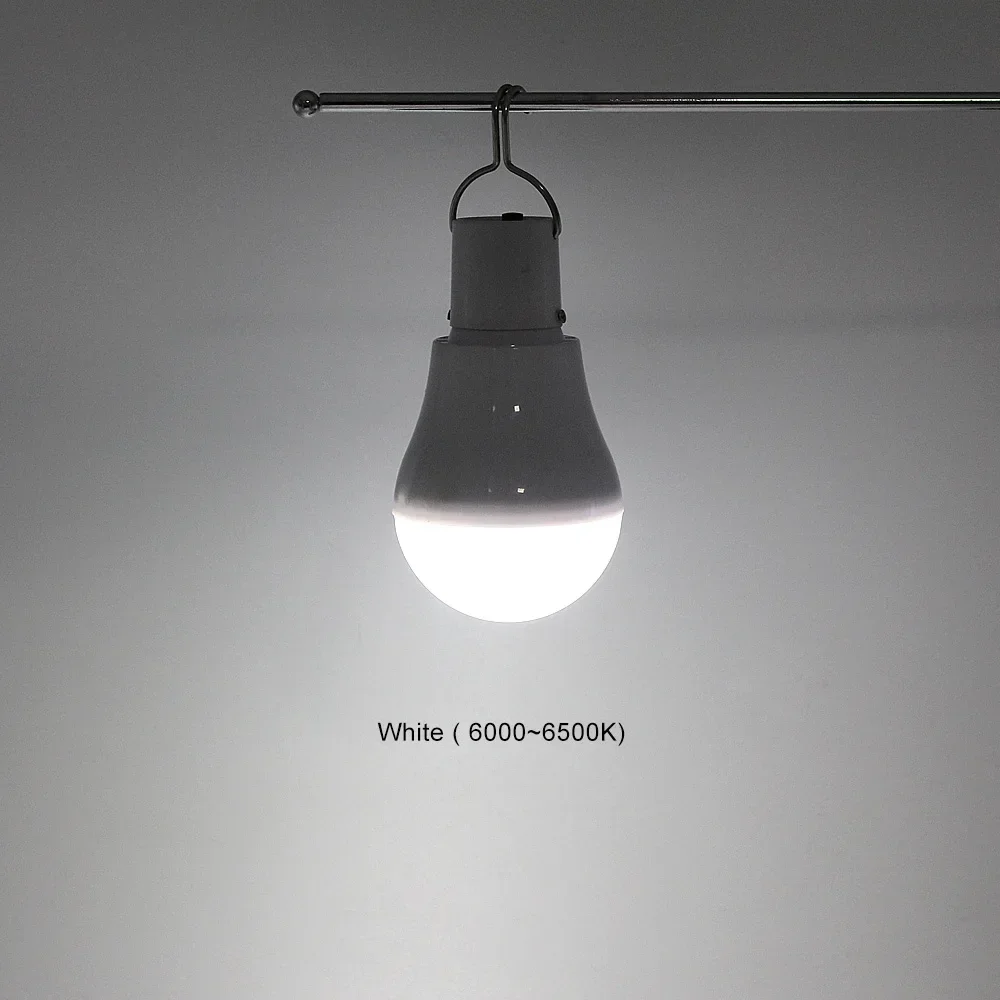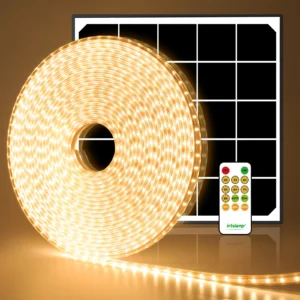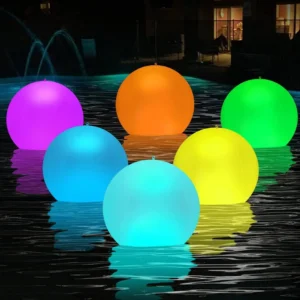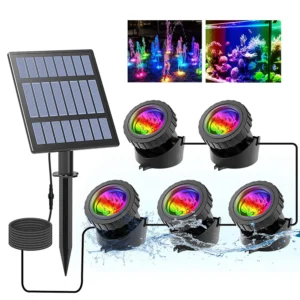Indoor solar lights offer a sustainable way to illuminate your home while saving energy and reducing electricity costs. By harnessing the power of sunlight, these innovative lights not only help lower energy bills but also contribute to a greener environment.
Are There Indoor Solar Lights?
Yes, indoor solar lights are a practical and innovative solution for lighting your home. Designed specifically to harness solar energy, these lights function efficiently even in indoor environments where natural light is available. Unlike traditional lighting options, indoor solar lights provide an eco-friendly alternative that reduces reliance on electricity, making them both cost-effective and sustainable.
Functionality
Indoor solar lights operate by capturing sunlight through solar panels, converting it into electrical energy, and storing that energy in batteries. When the sun sets, these lights automatically turn on using the stored energy, thanks to built-in light sensors. This automation means you can enjoy ambient lighting without the need for manual switches, enhancing convenience in your daily routine.
Components
Solar Panels:
The core component of indoor solar lights, solar panels absorb sunlight during the day. These panels are typically made of photovoltaic cells, which convert sunlight into electricity. Their efficiency can vary based on size and quality, but even compact panels can effectively power indoor lights when placed in sunny locations.Batteries:
The rechargeable batteries store the energy harvested by the solar panels. They come in various types, with lithium-ion and nickel-metal hydride being the most common. The capacity of the batteries determines how long the lights can operate at night, with most indoor solar lights providing several hours of illumination after a full day’s charge.Light Sensors:
Light sensors are crucial for the automatic operation of indoor solar lights. They detect changes in ambient light levels and trigger the lights to turn on at dusk and off at dawn. This feature not only saves energy but also ensures that you never have to remember to switch the lights on or off.Controllers:
The controller manages the overall operation of the solar lights, including the charge and discharge cycles of the batteries. Some advanced models may include additional features such as brightness adjustments or timers, allowing for more customized lighting experiences tailored to specific needs.
How Indoor Solar Lights Work
Indoor solar lights operate through a simple yet effective process that harnesses sunlight to provide illumination. Understanding how they work involves looking closely at the daytime charging process and the automatic activation and deactivation features.
Daytime Charging Process
During the day, when sunlight is abundant, the solar panels of indoor solar lights capture solar energy. These panels are equipped with photovoltaic cells that convert sunlight into electricity. Here’s how it works:
Absorption of Sunlight:
When placed in a well-lit area, solar panels absorb sunlight. The efficiency of this absorption can be influenced by the angle of the panels, the intensity of sunlight, and any potential obstructions, such as furniture or curtains.Conversion to Electricity:
The photovoltaic cells in the solar panels convert the absorbed sunlight into direct current (DC) electricity. This process relies on the photovoltaic effect, where sunlight excites electrons in the solar cells, creating an electric current.Storage in Batteries:
The generated electricity is then directed to rechargeable batteries, where it is stored for later use. The capacity of these batteries determines how long the lights can function once the sun goes down. Most batteries are designed to hold enough charge to power the lights for several hours, typically ranging from 5 to 8 hours, depending on the model and sunlight exposure.
Automatic Activation at Dusk and Deactivation at Dawn
One of the standout features of indoor solar lights is their ability to operate automatically based on surrounding light conditions. This functionality is made possible through the integration of light sensors:
Dusk Activation:
As daylight diminishes, the built-in light sensor detects the decrease in ambient light levels. When it reaches a certain threshold—typically at sunset—the sensor triggers the lights to turn on automatically. This means you can enjoy seamless illumination without having to manually switch the lights on.Dawn Deactivation:
Conversely, when the sun rises and natural light returns, the light sensor detects the increased brightness and automatically turns the lights off. This feature helps conserve battery power, ensuring that the lights only operate when necessary.
Advantages of Using Solar Lights Indoors
Indoor solar lights offer numerous benefits, making them an increasingly popular choice for various applications within the home. From practical functionality to environmental sustainability, these lights bring a unique set of advantages compared to traditional indoor lighting solutions.
Suitable for Various Indoor Applications
Indoor solar lights are highly versatile and can be effectively utilized in numerous spaces, including:
Hallways:
Solar lights can illuminate hallways, providing a warm and inviting ambiance. Their automatic activation at dusk ensures that these spaces are well-lit without the need for manual switches, enhancing safety and navigation.Stairwells:
Placing solar lights in stairwells improves visibility, reducing the risk of accidents. With their ability to turn on automatically in low light, they serve as a reliable guide during nighttime, ensuring that occupants can navigate safely.Kitchens and Living Rooms:
Indoor solar lights can also brighten kitchens and living areas. They can be installed under cabinets or on walls, offering practical lighting solutions for tasks like cooking or reading while adding aesthetic appeal to the space.Bathrooms:
Solar lights can be used in bathrooms for ambient lighting or as accent features. Their compact designs and energy efficiency make them a suitable choice for spaces that require both functionality and style.Home Offices:
For those working from home, solar lights can provide task lighting without increasing electricity bills. Their ability to operate independently of the grid is especially beneficial during power outages.
Comparison with Traditional Indoor Lighting
When comparing indoor solar lights to traditional lighting options, several key advantages stand out:
Energy Efficiency:
Indoor solar lights operate on renewable energy, reducing dependence on electricity and lowering energy costs. In contrast, traditional lighting, such as incandescent or fluorescent bulbs, consumes significant electricity and contributes to higher utility bills.Environmental Impact:
Solar lights help minimize carbon footprints by utilizing clean energy. Traditional lighting sources often rely on fossil fuels, which contribute to pollution and greenhouse gas emissions.Installation Flexibility:
Solar lights require no wiring or complex installation processes, making them easy to set up in various locations. In contrast, traditional lighting may necessitate professional installation, especially in spaces where electrical outlets are not readily available.Maintenance:
Indoor solar lights typically require minimal maintenance. With no bulbs to replace frequently and built-in sensors, they operate automatically, while traditional lighting systems often require regular bulb changes and maintenance.Safety:
Since solar lights do not require direct electrical connections, they pose less risk of electrical hazards, making them a safer option for indoor use. This is particularly important in areas prone to moisture, such as bathrooms and kitchens.
How to Install Indoor Solar Lights
Installing indoor solar lights is a straightforward process that can significantly enhance your living spaces. By following these simple steps, you can ensure optimal performance and effective lighting for various indoor applications.
Step 1: Find Locations with Maximum Sunlight
The first step in installing indoor solar lights is identifying areas in your home that receive the most sunlight. Proper placement is crucial for maximizing solar energy absorption. Here’s how to choose the best locations:
Assess Sunlight Exposure:
Observe your home throughout the day to determine which rooms receive direct sunlight. Areas such as porches, sunrooms, and conservatories are ideal since they often have large windows or open spaces that let in ample sunlight.Consider Window Orientation:
The orientation of your windows can impact sunlight exposure. South-facing windows typically receive the most direct sunlight throughout the day, while east-facing windows catch morning light and west-facing ones receive afternoon sunlight. Use this information to select spots that will maximize energy collection for your solar lights.Avoid Shade:
Ensure that the chosen locations are free from obstructions that could cast shadows on the solar panels, such as trees, tall furniture, or neighboring buildings. If necessary, consider trimming back foliage or rearranging furniture to create more sunlit areas.
Step 2: Check Solar Light Settings
Before fully installing your indoor solar lights, it’s essential to check their settings to ensure they operate as intended:
ON/OFF Switch:
Many solar lights come equipped with an ON/OFF switch, allowing you to control when the lights are activated. This feature is especially useful for indoor settings, where you may want to turn the lights off during the day or when they are not needed.Brightness Adjustments:
Some models offer adjustable brightness settings, enabling you to customize the light intensity according to your needs. This feature can help create the desired ambiance, whether you need bright task lighting for cooking or a softer glow for relaxation.Motion Sensors (if applicable):
If your solar lights include motion sensors, ensure they are correctly set up to detect movement within the intended range. This functionality is particularly beneficial in areas like hallways and stairwells, where lights can automatically turn on when someone approaches.
Step 3: Positioning the Lights Effectively for Use
Once you’ve identified suitable locations and checked the settings, it’s time to position your indoor solar lights:
Mounting Options:
Depending on the type of solar lights you have, you may need to mount them on walls, ceilings, or place them on surfaces such as tables or shelves. For wall-mounted lights, ensure they are installed at an appropriate height to provide effective illumination without being obstructed.Position for Optimal Light Distribution:
When positioning the lights, consider the areas that require illumination. For example, place hallway lights where they can provide clear visibility along the path, and position stairwell lights to ensure each step is well-lit.Consider Solar Panel Placement:
If you’re using solar lights with separate solar panels, position the panels in direct sunlight, ideally outside or near windows. This flexibility allows you to place the lights in various indoor locations without compromising their energy efficiency.Test the Setup:
After installation, test the solar lights by observing their performance during the evening. Ensure they activate automatically at dusk and provide sufficient illumination in the intended areas. If necessary, make adjustments to the positioning to improve light coverage.
Placement Tips
Proper placement of indoor solar lights is crucial for maximizing their efficiency and ensuring optimal lighting. Here are some important considerations and recommendations:
Importance of Separate Solar Panels for Optimal Positioning
Flexibility in Placement:
One of the key advantages of using solar lights with separate solar panels is the flexibility it offers. This allows you to position the lights in areas that may not receive direct sunlight while still optimizing energy absorption. You can place the solar panel in a sunlit spot while the light fixture itself can be installed in a more convenient location for illumination.Enhanced Energy Collection:
By separating the solar panel from the light, you can ensure it receives maximum sunlight exposure without any obstructions. This is especially beneficial for homes with limited direct sunlight in certain rooms. Properly positioning the solar panel can significantly improve the overall efficiency and longevity of your indoor solar lights.Adjustability for Seasonal Changes:
Separate solar panels can be easily adjusted or repositioned based on seasonal changes in sunlight. During winter months, when the sun’s angle shifts, you can realign the panel to capture more sunlight, ensuring consistent charging throughout the year.
Recommendations for Maximizing Sunlight Exposure
Identify Sunlit Areas:
Take note of the sunlit areas in your home throughout the day. South-facing windows or areas that receive unobstructed sunlight in the morning and afternoon are ideal for placing solar panels. Use this information to strategically position your solar panels where they can capture the most sunlight.Use Reflective Surfaces:
To enhance sunlight exposure, consider placing solar panels near reflective surfaces, such as mirrors or light-colored walls. These surfaces can help redirect sunlight onto the panels, increasing energy absorption.Avoid Obstructions:
Ensure that your solar panels are free from any objects that could block sunlight, such as furniture, curtains, or plants. Even small obstructions can reduce the efficiency of solar panels, so it’s essential to choose locations that are consistently exposed to direct light.Utilize Adjustable Mounting Options:
If your solar panels come with adjustable mounts, take advantage of this feature to angle the panels towards the sun. Adjusting the angle can make a significant difference in energy collection, especially during different times of the year.Regular Maintenance:
Periodically check the solar panels for dust or debris that may obstruct sunlight. Keeping them clean ensures maximum exposure and optimal performance. A quick wipe with a damp cloth can help maintain their efficiency.Consider External Factors:
Be mindful of seasonal changes, such as the growth of nearby trees or the angle of sunlight during different times of the year. Adjust your solar panel placement accordingly to account for these variations, ensuring they receive sufficient light throughout the year.
FAQs About Indoor Solar Lights
How do you charge solar lights indoors?
Indoor solar lights rely on sunlight to operate, but they can also charge through daylight. Ensure they receive adequate light to maintain battery charge.Can outdoor solar lights be used indoors?
Yes! Outdoor solar lights can be utilized indoors by placing them near a south-facing window or utilizing reflective materials to direct light onto the solar panels.
Conclusion
Indoor solar lights present a fantastic opportunity to brighten your living spaces sustainably. With proper installation and placement, they not only enhance the aesthetic of your home but also contribute to energy savings and environmental conservation. Explore the possibilities of indoor solar lights today!


















